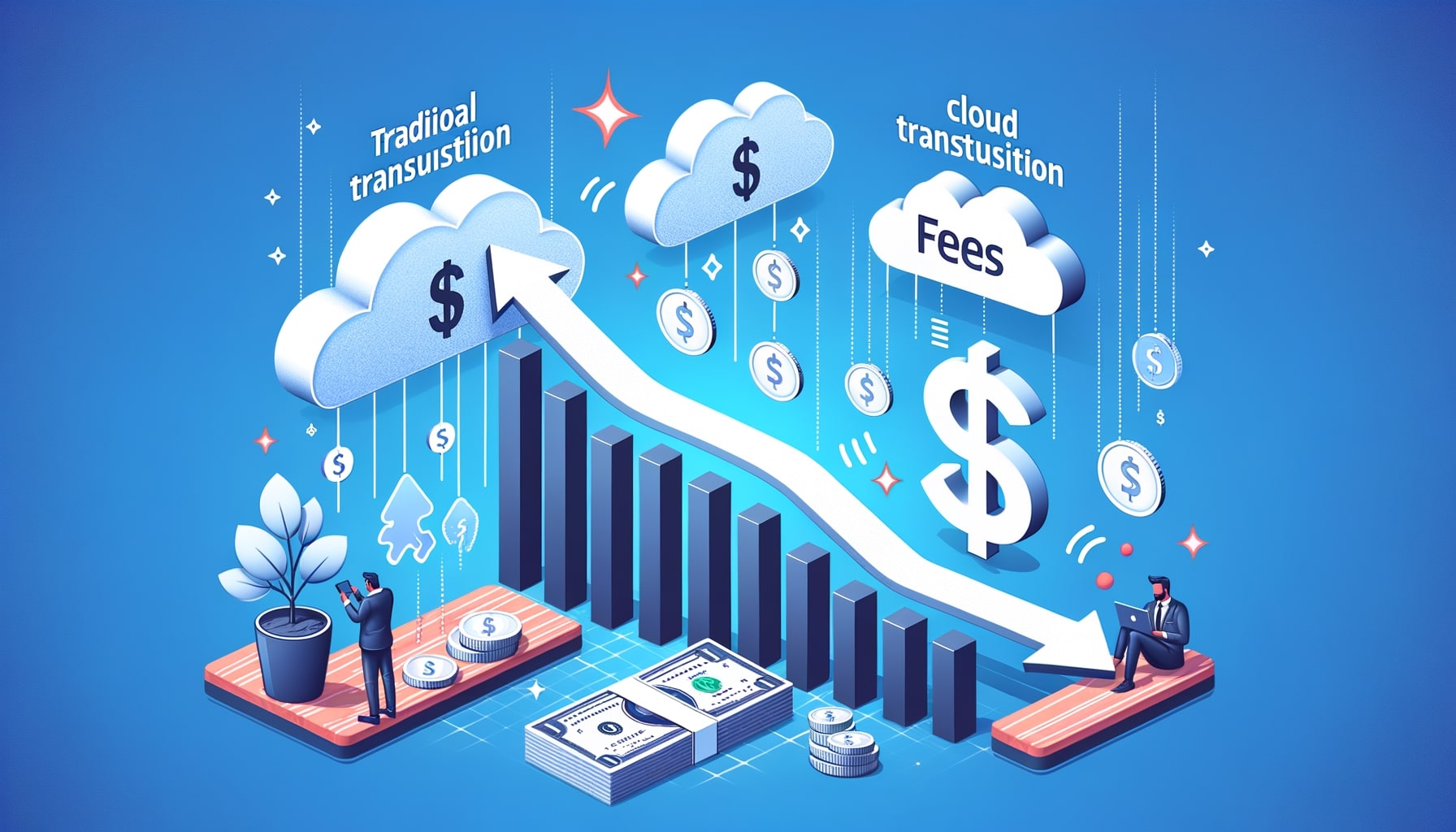How AI is Transforming Cloud Payments
In recent years, the convergence of artificial intelligence (AI) and cloud computing has revolutionized various industries, and the world of payments is no exception. AI has emerged as a powerful tool that can transform the way payments are processed, secured, and personalized in the cloud. By leveraging AI technologies, businesses can enhance security and fraud detection, streamline payment processes, deliver personalized customer experiences, gain valuable insights through analytics, improve payment authorization and authentication, and overcome implementation challenges. This article will delve into each of these aspects, exploring the potential of AI in transforming cloud payments.
Understanding AI in Cloud Payments: A Comprehensive Overview
Before delving into the specific applications of AI in cloud payments, it is crucial to understand what AI entails in this context. AI refers to the simulation of human intelligence in machines that are programmed to think and learn like humans. In the realm of cloud payments, AI algorithms and models are designed to analyze vast amounts of data, identify patterns, and make intelligent decisions or predictions. These algorithms can be trained using machine learning techniques, enabling them to continuously improve their performance over time.
Enhancing Security and Fraud Detection in Cloud Payments with AI
Security and fraud detection are paramount concerns in the world of payments, and AI has emerged as a game-changer in this regard. AI-powered systems can analyze large volumes of transactional data in real-time, enabling the detection of suspicious activities and potential fraud attempts. By leveraging machine learning algorithms, these systems can learn from historical data and identify patterns that indicate fraudulent behavior. This proactive approach to fraud detection can significantly reduce the risk of financial losses for businesses and protect customer data.
Furthermore, AI can enhance security in cloud payments by enabling biometric authentication methods. Biometric data, such as fingerprints or facial recognition, can be used to authenticate users, providing an additional layer of security beyond traditional password-based authentication. AI algorithms can analyze biometric data and match it against stored templates, ensuring that only authorized individuals can access payment systems in the cloud.
Streamlining Payment Processes: AI-driven Automation in the Cloud
Another area where AI is transforming cloud payments is through automation. Traditional payment processes often involve manual intervention, leading to delays, errors, and inefficiencies. AI-powered automation can streamline these processes, reducing human error and increasing efficiency.
For example, AI algorithms can automate invoice processing by extracting relevant information from invoices and populating payment systems automatically. This eliminates the need for manual data entry, saving time and reducing the risk of errors. Similarly, AI can automate payment reconciliation processes by matching incoming payments with corresponding invoices or purchase orders, ensuring accurate and timely reconciliation.
Leveraging AI for Personalized Customer Experiences in Cloud Payments
In today’s digital age, customers expect personalized experiences across all touchpoints, including payments. AI can play a crucial role in delivering these personalized experiences in cloud payments. By analyzing customer data, AI algorithms can identify individual preferences, behaviors, and purchasing patterns. This information can then be used to tailor payment options, offers, and recommendations to each customer.
For instance, AI-powered chatbots can interact with customers in real-time, providing personalized payment assistance and resolving queries. These chatbots can understand natural language and context, enabling seamless and personalized interactions. Additionally, AI algorithms can analyze customer data to offer personalized payment plans or financing options based on individual creditworthiness and financial history.
AI-powered Analytics: Unleashing Insights for Better Decision Making in Cloud Payments
Data is a valuable asset in the world of payments, and AI-powered analytics can unlock its full potential. By analyzing vast amounts of transactional data, AI algorithms can uncover valuable insights that can inform decision-making processes.
For example, AI can analyze customer purchasing patterns to identify cross-selling or upselling opportunities. By understanding which products or services are frequently purchased together, businesses can tailor their offerings and promotions to maximize revenue. AI can also analyze payment data to identify trends and predict future demand, enabling businesses to optimize inventory management and supply chain processes.
The Role of AI in Improving Payment Authorization and Authentication in the Cloud
Payment authorization and authentication are critical components of secure cloud payments. AI can enhance these processes by leveraging advanced algorithms and techniques.
AI algorithms can analyze historical transaction data to build models that can predict the likelihood of a transaction being fraudulent. These models can assign risk scores to transactions, enabling businesses to implement dynamic authorization rules. For example, if a transaction is flagged as high-risk, additional authentication measures can be triggered, such as two-factor authentication or biometric verification.
Overcoming Challenges: Implementing AI in Cloud Payment Systems
While the potential benefits of AI in cloud payments are significant, there are challenges associated with its implementation. One of the primary challenges is the availability and quality of data. AI algorithms require large volumes of high-quality data to train effectively. Businesses must ensure that they have access to relevant and diverse data sets to achieve accurate and reliable results.
Another challenge is the integration of AI systems with existing payment infrastructure. Businesses need to ensure that AI systems can seamlessly integrate with their payment gateways, processors, and other components of their payment ecosystem. This requires careful planning, coordination, and potentially, customization of existing systems.
Furthermore, there are ethical considerations associated with AI in cloud payments. Businesses must ensure that AI algorithms are transparent, fair, and unbiased. They must also address privacy concerns and comply with data protection regulations to protect customer information.
Future Trends: Exploring the Potential of AI in Cloud Payments
The future of AI in cloud payments is promising, with several trends expected to shape the industry. One such trend is the increasing use of natural language processing (NLP) and voice recognition technologies. NLP can enable customers to interact with payment systems using natural language, simplifying the payment process and enhancing the user experience. Voice recognition technologies can enable secure voice-based authentication, further enhancing security in cloud payments.
Another trend is the integration of AI with blockchain technology. Blockchain provides a decentralized and transparent ledger that can enhance security and trust in payment transactions. By combining AI and blockchain, businesses can leverage the power of AI for fraud detection and analytics while ensuring the integrity and immutability of payment data.
Conclusion The Promising Future of AI in Transforming Cloud Payments
In conclusion, AI is transforming cloud payments in various ways, from enhancing security and fraud detection to streamlining payment processes, delivering personalized customer experiences, enabling data-driven decision making, improving payment authorization and authentication, and overcoming implementation challenges. The intersection of AI and cloud computing has opened up new possibilities for businesses to optimize their payment systems, enhance customer satisfaction, and drive growth. As AI continues to evolve and mature, the future of cloud payments looks promising, with exciting trends on the horizon.
FAQs:
Q.1: What is the role of AI in cloud payments?
A: AI plays a crucial role in cloud payments by enhancing security and fraud detection, streamlining payment processes, delivering personalized customer experiences, enabling data-driven decision making, improving payment authorization and authentication, and overcoming implementation challenges.
Q.2: How does AI enhance security and fraud detection in cloud payments?
A: AI-powered systems can analyze large volumes of transactional data in real-time, enabling the detection of suspicious activities and potential fraud attempts. By leveraging machine learning algorithms, these systems can learn from historical data and identify patterns that indicate fraudulent behavior. AI also enables biometric authentication methods, adding an extra layer of security.
Q.3: Can AI automate payment processes in the cloud?
A: Yes, AI can automate payment processes in the cloud. For example, AI algorithms can automate invoice processing by extracting relevant information from invoices and populating payment systems automatically. AI can also automate payment reconciliation processes by matching incoming payments with corresponding invoices or purchase orders.
Q.4: How does AI enable personalized customer experiences in cloud payments?
A: AI analyzes customer data to identify individual preferences, behaviors, and purchasing patterns. This information can then be used to tailor payment options, offers, and recommendations to each customer. AI-powered chatbots can also interact with customers in real-time, providing personalized payment assistance and resolving queries.
Q.5: What insights can be gained from AI-powered analytics in cloud payments?
A: AI-powered analytics can uncover valuable insights by analyzing vast amounts of transactional data. These insights can inform decision-making processes, such as identifying cross-selling or upselling opportunities, optimizing inventory management, and predicting future demand.
Q.6: How does AI improve payment authorization and authentication in the cloud?
A: AI algorithms can analyze historical transaction data to build models that can predict the likelihood of a transaction being fraudulent. These models can assign risk scores to transactions, enabling businesses to implement dynamic authorization rules. AI can also enable additional authentication measures, such as two-factor authentication or biometric verification, for high-risk transactions.
Q.7: What challenges are associated with implementing AI in cloud payment systems?
A: Challenges associated with implementing AI in cloud payment systems include the availability and quality of data, integration with existing payment infrastructure, and ethical considerations such as transparency, fairness, and privacy.
Q.8: What future trends can we expect in AI and cloud payments?
A: Future trends in AI and cloud payments include the increasing use of natural language processing and voice recognition technologies for simplified and secure interactions, as well as the integration of AI with blockchain technology for enhanced security and trust in payment transactions.
Conclusion
The intersection of AI and cloud payments has opened up new possibilities for businesses to optimize their payment systems, enhance security, streamline processes, deliver personalized experiences, gain valuable insights, improve authorization and authentication, and overcome implementation challenges. As AI continues to evolve, the future of cloud payments looks promising, with exciting trends on the horizon. By embracing AI technologies, businesses can stay ahead of the curve and unlock the full potential of cloud payments.










